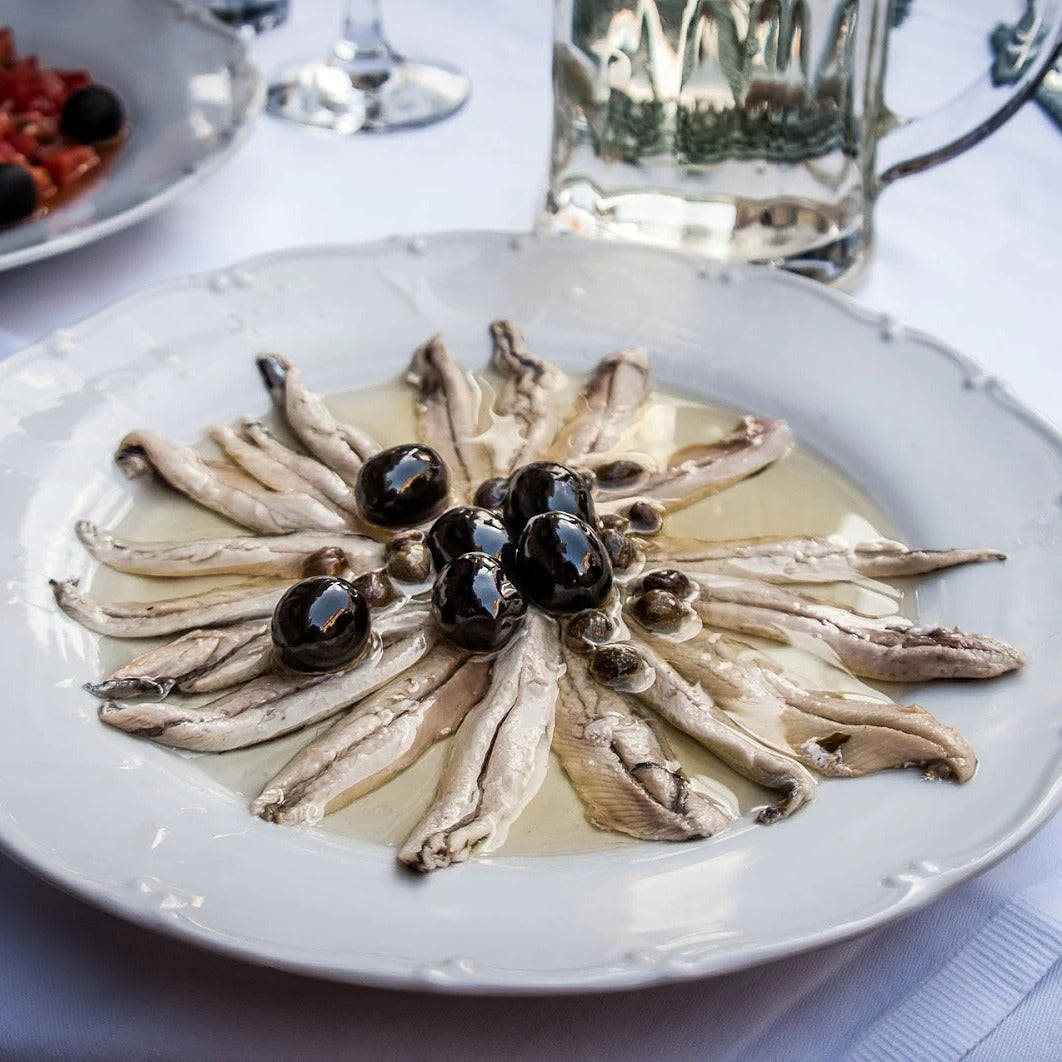Have you noshed on tinned fish in a restaurant before? It’s a foodie trend that keeps on growing. If you haven’t already seen it on a menu near you, it may only be a matter of time.
Today we’re going to take a closer look at how tinned fish isn’t just a Portuguese staple but a delicacy of fine dining and simple dinners alike, sure to delight your taste buds and connect you to the salty taste of the sea. And if you live in the U.S. you’ll find some suggestions for tinned-fish-serving restaurants to try out.
The Restaurant Industry
“Eating Out” is a common social activity that has grown in popularity over the decades. In Minneapolis, MN for example, a 2019 survey claims that over 50% of people dine out more than once a week.
Especially as the world’s population transitions to largely urban dwellings, restaurants and food vendors play an ever-important role in sustenance, culture, and community. The spectrum is vast: There are one dollar slices of pizza and $450 meals of Japanese cuisine on the same island: New York City. Even in the midst of a pandemic, the projected sales of the restaurant industry land at around 659 billion dollars in the U.S. alone. As the restaurant industry grows, more and more people across the world are incorporating tinned fish into their menus.
History Of Tinned Fish In Restaurants
It may be a growing fad, but that doesn’t mean that tinned fish are a new thing.
Tinned fish on the menu is a tradition in plenty of cultures around the world that stretches back hundreds of years and longer. This is especially true in countries with a coastline such as Spain, France, England, and Canada. Portuguese cuisine in particular has long been lauded for its tinned fish delicacies and is a defining aspect of life for locals as well as visiting tourists.
There’s a memorable taste to sardines in olive oil, or anchovies on an open-faced sandwich. And even though tinned fish was the lowest ranked pizza topping in the U.S. in 2016, opinions are shifting. The market for preserved fish is predicted to reach a whopping $36.7 billion this year.
The restaurant Saltie Girl is known to be the largest tinned fish collection in the Northeast corner of the U.S. It has gained national and global followings in part because of their vast tinned fish options.
Middle Brow’s Bungalow can be found on a different sort of shoreline: the fresh waters of Lake Michigan. For midwesterners in the area, it can be a delightful brewpub atmosphere with artisan pizzas - often topped with tinned fish.
Down in Atlanta, Georgia, a Japanese kanzume-style restaurant Ink specializes in cocktails and luxurious canned foods, many of them fish dishes. The tin cans are even featured as decorations in the dining space.
These are just three examples - and there will be more and more to choose from as tinned fish popularity increases. Food writers, columnists, chefs, and immigrants from the Iberian peninsula have been singing the praises of these salty fish for years. The rest of us are finally starting to catch up.
Perks Of Tinned Fish
There are plenty of good reasons for tinned fish to grace a menu - in addition to the salty taste, of course.
Firstly, tinned fish is cost efficient. If you are living on a strict budget, but love the sea-taste of fish, tinned and canned fish can be a smart option to incorporate into your grocery list without having to break the bank. The same is true for restaurants, in fact, which often have a very slim margin of profit. For example, Verjus combines the concepts of a wine bar and restaurant to get the best of both worlds, pairing beverages with tinned goods.
Secondly, tinned fish are a pantry item in the sense that they can be stored and ready for use whenever necessary. This is obviously quite different from fresh fish and fresh produce, which must be used promptly or preserved somehow before the food goes rancid. Tinned fish on the other hand can last up to 5 years on the shelf as long as it hasn’t been opened. This is according to the U.S. Department Of Agriculture’s website.
There are also a variety of health benefits to consuming tinned fish. These slippery, swimming creatures are full of fatty omega-3s which are really good for your heart and other organs. Fish also contains vitamin D, B12, calcium, phosphorus, iron, zinc, magnesium, and other healthy nutrients. The American Heart Association recommends eating fish twice a week - so it’s a good thing that tinned fish is such an affordable option!
According to the New York Times, celebrated chefs are using tinned fish as an alternative to dairy in their cooking. This is because the umami flavor of fish exists in a similar realm as that of parmesan.
Additionally, tinned fish like anchovies and sardines are also familiar to people. Nostalgia is not to be underestimated. Often, the most important ingredient of a delicious meal is the emotional experience that accompanies the time and place. By incorporating tinned fish into a meal, chefs are connecting people to memories of childhood and family that are linked to these fish-preservative practices while carrying the tradition into the future.

Sustainability In 2021
The past two years have been brutal on the service industry. In a pandemic that restricts how and when humans can gather, it was the staff of beloved restaurants, family businesses, and local food experiments that floundered to stay afloat.
Restaurants are finally welcoming patrons back to their tables. And we’re all a little bit more aware of how our actions impact our communities. And maybe this is part of the boom in interest too: tin fish such as anchovies and sardines are a tasty and sustainable option. There are activism groups working to reintroduce tinned fish to the popular American palate, even though they live over 1,000 miles from the nearest ocean and are surrounded by cornfields.
We can choose to support businesses that emphasize responsible models of production and value biodiversity and work to protect it. This is important because while tinned fish like anchovies, sardines, and herring can be a sustainable choice, they are not an infinite resource.
Instead, we need to remember that even these 3-inch fish are critical members of a healthy ecosystem. Be sure to support the providers of these delicacies that care as much about the food on your plate as they do about the waters where these fish swim.



